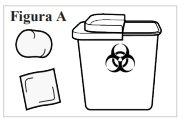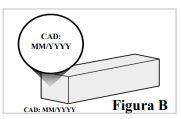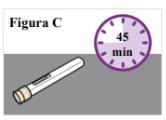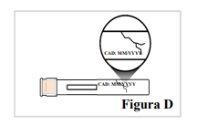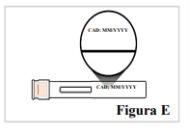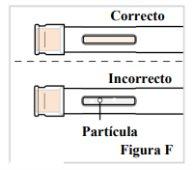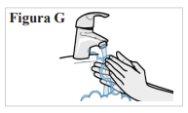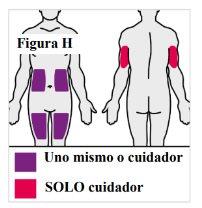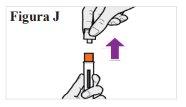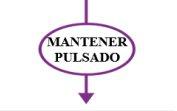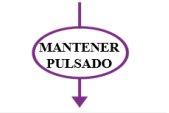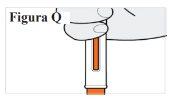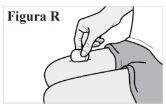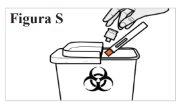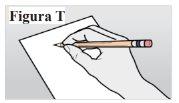
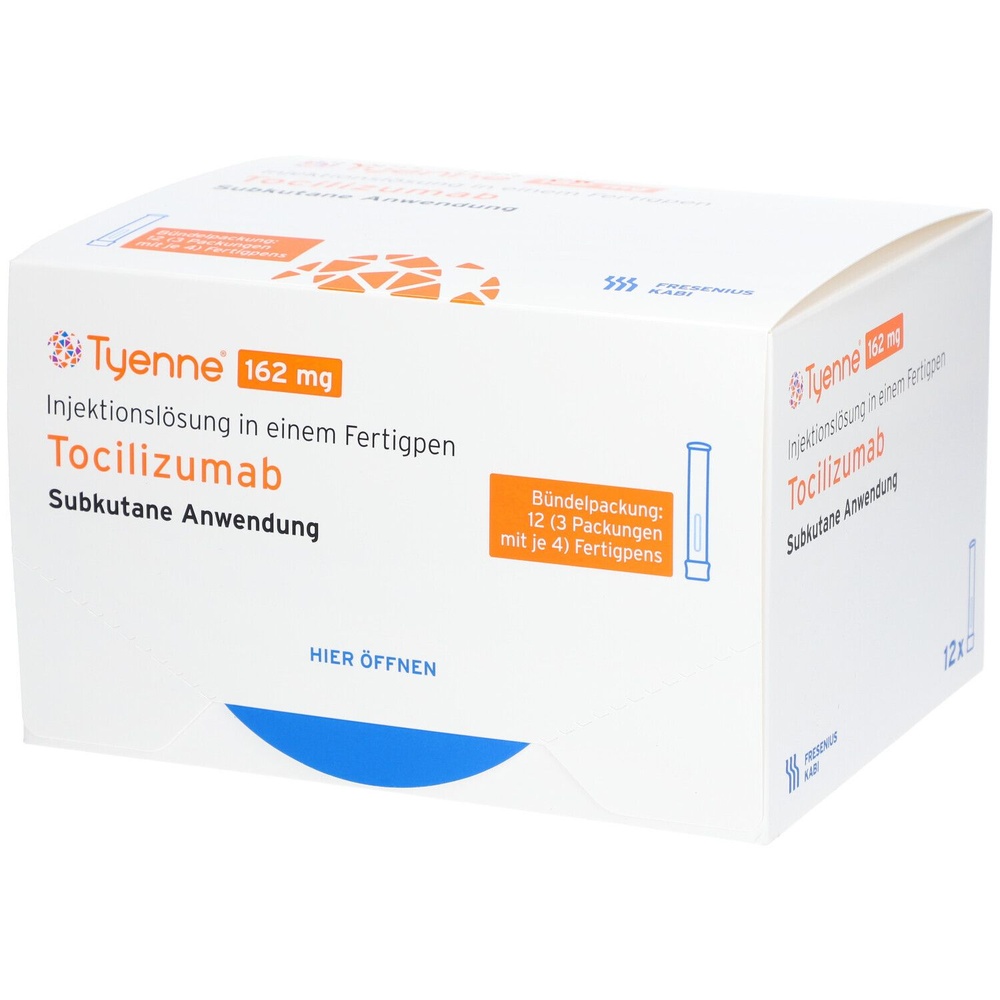
ТИЕННЕ 162 мг РАСТВОР ДЛЯ ИНЪЕКЦИЙ В ПРЕДНАПОЛНЕННОМ ШПРИЦЕ-РУЧКЕ


Инструкция по применению ТИЕННЕ 162 мг РАСТВОР ДЛЯ ИНЪЕКЦИЙ В ПРЕДНАПОЛНЕННОМ ШПРИЦЕ-РУЧКЕ
Введение
Инструкция: информация для пользователя
Тиенне 162 мг раствор для инъекций в предварительно заполненном шприце
тоцилизумаб
Это лекарство подлежит дополнительному наблюдению, что ускорит обнаружение новой информации о его безопасности. Вы можете способствовать этому, сообщая о побочных эффектах, которые у вас могут возникнуть. В конце раздела 4 содержится информация о том, как сообщать о этих побочных эффектах.
Прочитайте весь листок внимательно перед началом использования этого лекарства, поскольку он содержит важную информацию для вас.
- Сохраните этот листок, поскольку вам может понадобиться перечитать его.
- Если у вас есть какие-либо вопросы, проконсультируйтесь с вашим врачом, фармацевтом или медсестрой.
- Это лекарство было назначено только вам, и его не следует давать другим людям, даже если у них такие же симптомы, как у вас, поскольку оно может нанести им вред.
- Если вы испытываете побочные эффекты, проконсультируйтесь с вашим врачом, фармацевтом или медсестрой, даже если это побочные эффекты, которые не указаны в этом листке. См. раздел 4.
Помимо этого листка, вам будет дана Карта информации для пациента, содержащая важную информацию о безопасности, которую вы должны знать до начала и во время лечения Тиенне.
Содержание листка
- Что такое Тиенне и для чего оно используется
- Что вам нужно знать перед началом использования Тиенне
- Как использовать Тиенне
- Возможные побочные эффекты
- Хранение Тиенне
- Содержание упаковки и дополнительная информация
1. Что такое Тиенне и для чего оно используется
Тиенне содержит активное вещество тоцилизумаб, которое является белком, полученным из определенных иммунных клеток (моноклональное антитело), блокирующим действие определенного типа белка (цитокина), называемого интерлейкином-6. Этот белок участвует в воспалительных процессах в организме, и блокируя его, можно уменьшить воспаление. Тиенне показано для лечения:
- взрослых с активной ревматоидной артритой (РА) средней или тяжелой степени, которая является аутоиммунным заболеванием, если предыдущие методы лечения не были эффективными.
- взрослых с тяжелой, активной и прогрессирующей ревматоидной артритой (РА), которые ранее не получали метотрексат.
Тиенне помогает уменьшить симптомы РА, такие как боль и отек в суставах, и также может улучшить вашу способность выполнять повседневные задачи. Тиенне показало снижение прогрессирования повреждения суставов и костей, вызванного заболеванием, и улучшение вашей способности выполнять повседневные активности.
Тиенне обычно используется в комбинации с другим препаратом для лечения РА, называемым метотрексатом. Однако Тиенне может быть назначен самостоятельно, если ваш врач решит, что метотрексат не подходит.
- взрослых с заболеванием артерий, называемым гигантоклеточной артериитом (ГКА), вызванным воспалением крупных артерий организма, особенно тех, которые供应ят кровь к голове и шее. Симптомы могут включать головную боль, усталость (утомление) и боль в челюсти. Эффекты могут включать инсульт и слепоту.
Тиенне может уменьшить боль и отек артерий и вен головы, шеи и рук.
ГКА часто лечится препаратами, называемыми стероидами. Обычно они эффективны, но могут иметь побочные эффекты, если используются в высоких дозах в течение длительного времени. Снижение дозы стероидов также может привести к обострению ГКА. Добавление Тиенне к лечению может сделать время использования стероидов более коротким, при этом контролируя заболевание.
- детей и подростков в возрасте 12 лет и старше с активной ювенильной идиопатической артритом системного типа (ЮИАС), воспалительным заболеванием, вызывающим боль и отек в одном или нескольких суставах, а также лихорадку и кожную сыпь.
Тиенне используется для улучшения симптомов ЮИАС. Оно может быть назначено в комбинации с метотрексатом или самостоятельно.
- детей и подростков в возрасте 12 лет и старше с активной ювенильной идиопатической полияртритом (ЮИП). Это воспалительное заболевание, вызывающее боль и отек в одном или нескольких суставах.
Тиенне используется для улучшения симптомов ЮИП. Оно может быть назначено в комбинации с метотрексатом или самостоятельно.
2. Что вам нужно знать перед началом использования Тиенне
Тиенне не будет назначено
- Если вы аллергичнык тоцилизумабу или любому другому компоненту этого препарата (перечисленному в разделе 6).
- Если у вас есть тяжелая активная инфекция.
Если у вас есть что-то из этого, проконсультируйтесь с врачом или медсестрой, которые вводят инфузию.
Предостережения и меры предосторожности
Проконсультируйтесь с вашим врачом или медсестрой перед началом приема Тиенне.
- Если вы испытываете аллергические реакциитакие как чувство сдавления в груди, свистящее дыхание, головокружение или сильное головокружение, отек губ или кожная сыпь во время или после инфузии, сообщите об этом вашему врачу немедленно.
- Если у вас есть любая инфекция, будь то короткая или длительная, или если вы часто болеете инфекциями. Немедленно сообщите об этом вашему врачу, если вы чувствуете себя плохо. Тиенне может уменьшить способность вашего организма реагировать на инфекции и может сделать существующую инфекцию хуже или увеличить вероятность получения новой инфекции.
- Если вы имели туберкулез, сообщите об этом вашему врачу. Ваш врач проверит признаки и симптомы туберкулеза перед началом лечения Тиенне. Немедленно сообщите об этом вашему врачу, если симптомы туберкулеза (постоянный кашель, потеря веса, общее недомогание, субфебрилитет) или любая другая инфекция появляются во время или после лечения.
- Если вы имели язву кишечника или дивертикулит, сообщите об этом вашему врачу. Симптомы могут включать боль в животе и необъяснимые изменения в кишечных привычках с лихорадкой.
- Если у вас есть печеночная болезнь, сообщите об этом вашему врачу. Перед использованием Тиенне ваш врач проведет анализ крови для измерения функции печени.
- Если пациент был недавно привит(взрослый или ребенок) или планирует прививаться, сообщите об этом вашему врачу. Все пациенты, особенно дети, должны быть привиты согласно календарю прививок перед началом лечения Тиенне, если только не требуется срочное начало лечения. Определенные типы вакцин не должны вводиться во время приема Тиенне.
- Если у вас есть рак, сообщите об этом вашему врачу. Ваш врач должен решить, можно ли продолжать лечение Тиенне.
- Если у вас есть факторы риска сердечно-сосудистых заболеваний, такие как повышенное артериальное давление,
высокие уровни холестерина, сообщите об этом вашему врачу. Эти факторы должны быть контролируемы во время лечения Тиенне.
- Если у вас есть умеренные или тяжелые проблемы с почками, ваш врач будет наблюдать за вами.
- Если у вас есть постоянные головные боли.
Ваш врач проведет анализ крови перед тем, как вы начнете принимать Тиенне, и во время лечения, чтобы определить, есть ли у вас низкий уровень белых кровяных клеток, низкий уровень тромбоцитов или повышение печеночных ферментов.
Дети и подростки
Не рекомендуется использовать Тиенне у детей младше 2 лет.
Сообщите об этом вашему врачу, если ребенок имеет историю синдрома активации макрофагов, (активация и неконтролируемое размножение определенных клеток крови). Ваш врач решит, можно ли продолжать лечение Тиенне.
Другие лекарства и Тиенне
Сообщите об этом вашему врачу, если вы принимаете, недавно принимали или можете принимать любое другое лекарство (или если ребенок принимает его, если он является пациентом). Это включает лекарства, приобретенные без рецепта. Тиенне может повлиять на то, как работают некоторые лекарства, и может потребоваться коррекция дозы. Сообщите об этом вашему врачу, если вы используете лекарства, содержащие любое из этих активных веществ:
- метилпреднизолон, дексаметазон, используемые для уменьшения воспаления,
- симвастатин или аторвастатин, используемые для уменьшения уровня холестерина,
- блокаторы кальциевых каналов, такие как амлодипин, используемые для лечения повышенного артериального давления,
- теофиллин, используемый для лечения астмы,
- варфарин или фенпрокумон, используемые как антикоагулянты,
- фенитоин, используемый для лечения судорог,
- циклоспорин, используемый при трансплантации органов как иммунодепрессант,
- бензодиазепины, такие как темазепам, используемые для успокоения тревоги.
Что касается вакцин, см. раздел предостережений выше.
Поскольку нет клинического опыта, не рекомендуется использовать Тиенне с другими биологическими препаратами, используемыми для лечения РА, ЮИАС или ЮИП.
Беременность и лактация
Тиенне не должно использоваться во время беременности, если только это не абсолютно необходимо. Поговорите с вашим врачом, если вы беременны, думаете, что можете быть беременной, или планируете стать беременной.
Женщины детородного возраста должны использовать эффективные методы контрацепции во время и до 3 месяцев после окончания лечения.
Прекратите кормление грудью, если начинаете лечение Тиенне, и проконсультируйтесь с вашим врачом. Перед повторным кормлением грудью должно пройти не менее 3 месяцев с момента последнего лечения Тиенне. Неизвестно, передается ли Тиенне в грудное молоко.
Доступные данные не предполагают, что это лечение имеет какой-либо эффект на фертильность.
Вождение и использование машин
Это лекарство может вызывать головокружение, если вы чувствуете себя головокружительно, не驾айте транспортные средства и не используйте машины.
Тиенне содержит натрий
Это лекарство содержит 0,24 мг натрия (основного компонента поваренной соли) в каждом мл. Это эквивалентно 0,012% от максимально допустимой суточной нормы потребления натрия для взрослого. Однако Тиенне разбавляется в растворе для инфузии хлорида натрия 9 мг/мл (0,9%) или 4,5 мг/мл (0,45%). Это должно быть учтено у пациентов с контролируемой натриевой диетой.
3. Как использовать Тиенне
Следуйте точно инструкциям по введению этого лекарства, указанным вашим врачом, фармацевтом или медсестрой. В случае сомнений проконсультируйтесь с вашим врачом, фармацевтом или медсестрой.
Лечение должно быть начато медицинским специалистом с опытом в диагностике и лечении РА, ЮИАС, ЮИП или ГКА.
Взрослые с РА или ГКА
Рекомендуемая дозадля всех взрослых с РА (ревматоидной артритой) или ГКА (гигантоклеточным артериитом) составляет 162 мг (содержимое предварительно заполненного шприца) один раз в неделю.
Подростки с ЮИАС (в возрасте 12 лет и старше)
Обычная доза Тиенне зависит от веса пациента.
- Если пациент весит менее 30 кг: доза составляет 162 мг (содержимое 1 предварительно заполненного шприца) один раз каждые 2 недели.
- Если пациент весит 30 кг или более: доза составляет 162 мг (содержимое 1 предварительно заполненного шприца) один раз в неделю.
Подростки с ЮИП (в возрасте 12 лет и старше)
Обычная доза Тиенне зависит от веса пациента.
- Если пациент весит менее 30 кг: доза составляет 162 мг (содержимое 1 предварительно заполненного шприца) один раз каждые 3 недели.
- Если пациент весит 30 кг или более: доза составляет 162 мг (содержимое 1 предварительно заполненного шприца) один раз каждые 2 недели.
Тиенне вводится путем инъекции под кожу (подкожно). Вначале ваш врач или медсестра могут вводить вам Тиенне. Однако ваш врач может решить, что вы сами можете вводить Тиенне. В этом случае вы получите информацию о том, как самостоятельно вводить Тиенне. Родители и опекуны будут обучены тому, как вводить Тиенне пациентам, которые не могут сами себя вводить.
Поговорите с вашим врачом, если у вас есть какие-либо вопросы о том, как вы или подросток, за которым вы ухаживаете, можете самостоятельно вводить инъекцию. В конце этого листка вы найдете подробные инструкции по введению.
Если вы используете больше Тиенне, чем должно быть
Поскольку Тиенне вводится в предварительно заполненном шприце, маловероятно, что будет введено слишком много. Однако, если вас это беспокоит, поговорите с вашим врачом, фармацевтом или медсестрой.
Если взрослый с РА или ГКА или подросток с ЮИАС пропустил или забыл дозу
Очень важно использовать Тиенне точно так, как назначил ваш врач. Следите за сроком следующей дозы.
- Если вы забыли дозу в течение 7 дней, примите дозу в следующий запланированный день.
- Если вы забыли дозу каждые 2 недели в течение 7 дней, введите дозу как можно скорее и примите следующую дозу согласно вашему исходному графику.
- Если вы забыли дозу более чем на 7 дней или не уверены, когда вводить Тиенне, позвоните вашему врачу или фармацевту.
Если подросток с ЮИП пропустил или забыл дозу
Очень важно использовать Тиенне точно так, как назначил врач. Следите за сроком следующей дозы.
- Если вы забыли дозу в течение 7 дней, введите дозу как можно скорее и примите следующую дозу согласно вашему исходному графику.
- Если вы забыли дозу более чем на 7 дней или не уверены, когда вводить Тиенне, позвоните врачу или фармацевту.
Если вы прекратите лечение Тиенне
Не прекращайте лечение Тиенне без предварительной консультации с вашим врачом.
Если у вас есть какие-либо другие вопросы о использовании этого лекарства, спросите у вашего врача, фармацевта или медсестры.
4. Возможные побочные эффекты
Как и все лекарства, это лекарство может вызывать побочные эффекты, хотя не все люди испытывают их. Побочные эффекты могут возникать до 3 месяцев после последней дозы Тиенне.
Возможные серьезные побочные эффекты: проконсультируйтесь с вашим врачом немедленно.
Это часто встречается: Может затронуть до 1 из 10 человек
Аллергические реакцииво время или после инъекции:
- затруднение дыхания, сдавление в груди или головокружение,
- кожная сыпь, зуд, крапивница, отек губ, языка или лица.
Если вы испытываете любой из этих симптомов, поговорите с вашим врачом немедленно.
Признаки тяжелых инфекций:
- лихорадка и озноб,
- пузырьки во рту или на коже,
- боль в животе.
Признаки и симптомы токсичности печени:
Может затронуть до 1 из 1000 человек
- усталость,
- боль в животе,
- желтуха (желтый цвет кожи или глаз).
Если вы заметите любой из этих симптомов, поговорите с вашим врачом немедленно.
Частые побочные эффекты:
Может затронуть более 1 из 10 человек
- инфекции верхних дыхательных путей, с типичными симптомами, такими как кашель, заложенность носа, насморк, боль в горле и головная боль,
- высокие уровни жира в крови (холестерин),
- реакции в месте инъекции.
Побочные эффекты:
Может затронуть до 1 из 10 человек
- инфекция легких (пневмония),
- герпес (герпес зостер),
- лихорадка (герпес простой), пузырьки,
- инфекции кожи (целлюлит), иногда с лихорадкой и ознобом,
- кожная сыпь и зуд, крапивница,
- аллергические реакции (гиперчувствительность),
- инфекция глаз (конъюнктивит),
- головная боль, головокружение, гипертония,
- язвы во рту, боль в животе,
- задержка жидкости (отек) в нижней части ног, увеличение веса,
- кашель, одышка,
- низкий уровень белых кровяных клеток в анализе крови (нейтропения, лейкопения),
- измененные показатели функции печени (повышение трансаминаз),
- повышение билирубина в анализе крови,
- низкий уровень фибриногена в крови (белка, участвующего в свертывании крови).
Редкие побочные эффекты:
Может затронуть до 1 из 100 человек
- дивертикулит (лихорадка, тошнота, диарея, запор, боль в животе),
- опухшие и красные участки во рту,
- высокие уровни жира в крови (триглицериды),
- язвы желудка,
- камни в почках,
- гипотиреоз.
Очень редкие побочные эффекты:
Может затронуть до 1 из 1000 человек
- Синдром Стивенса-Джонсона (кожная сыпь, которая может привести к образованию пузырей и сильному отслоению кожи),
- Смертельные аллергические реакции (анafilаксia [смертельная]),
- воспаление печени (гепатит), желтуха.
Очень редкие побочные эффекты:
Может затронуть до 1 из 10 000 человек
- низкий уровень белых кровяных клеток, красных кровяных клеток и тромбоцитов в анализе крови,
- печеночная недостаточность.
Дополнительные побочные эффекты у детей и подростков с ЮИАС или ЮИП
Побочные эффекты у детей и подростков с ЮИАС или ЮИП в целом подобны тем, которые у взрослых. Некоторые побочные эффекты, которые чаще встречаются у детей и подростков, включают воспаление носа и горла, головную боль, тошноту и снижение уровня белых кровяных клеток.
Сообщение о побочных эффектах
Если вы испытываете любой побочный эффект, проконсультируйтесь с вашим врачом, фармацевтом или медсестрой, даже если это возможные побочные эффекты, которые не указаны в этом листке. Вы также можете сообщить о них напрямую через национальную систему уведомления, включенную в Приложение V. Сообщая о побочных эффектах, вы можете способствовать предоставлению более полной информации о безопасности этого лекарства.
5. Хранение Тиенне
Храните это лекарство в недоступном для детей месте.
Не используйте это лекарство после даты истечения срока годности, указанной на упаковке.
Храните в холодильнике (при температуре от 2°C до 8°C). Не замораживайте.
Храните флаконы в наружной упаковке, чтобы защитить их от света.
6. Содержимое упаковки и дополнительная информация
Состав Тienne
- Активное вещество - тоцилизумаб.
Каждая предзагруженная ручка содержит 162 мг тоцилизумаба в 0,9 мл.
- Другие компоненты - L-аргинин, L-гистидин, молочная кислота, хлорид натрия, полисорбат 80, соляная кислота (E507) и/или гидроксид натрия (E524), вода для инъекционных препаратов.
Внешний вид продукта и содержимое упаковки
Тienne - раствор для инъекций. Раствор прозрачный и бесцветный до светло-желтого.
Тienne поставляется в предзагруженных ручках объемом 0,9 мл, содержащих 162 мг тоцилизумаба в растворе для инъекций.
Каждая упаковка содержит 1 или 4 предзагруженные ручки. Множественная упаковка содержит 12 (3 упаковки по 4) предзагруженных ручек. Возможно, что будут продаваться только некоторые размеры упаковок.
Владелец разрешения на маркетинг и ответственный за производство
Fresenius Kabi Deutschland GmbH
Else-Kroener-Strasse 1
61352 Бад-Хомбург-вд-Хёэ
Германия
Ответственный за производство
Fresenius Kabi Austria GmbH
Хафнерштрассе 36
8055 Грац
Австрия
Дата последнего пересмотра этой инструкции:
Другие источники информации
Подробная информация о этом лекарственном средстве доступна на сайте Европейского агентства по лекарственным средствам http://www.ema.europa.eu/.
- Инструкции по применению
Внимательно прочитайте эти инструкции по применению перед использованием предзагруженной ручки Тienne.
Прочитайте и следуйте инструкциям по применению, которые прилагаются к предзагруженной ручке Тienne, перед началом использования и каждый раз, когда получаете замену. Там может быть новая информация. Эта информация не заменяет консультацию с вашим врачом о вашем заболевании или лечении. Если у вас есть вопросы о использовании предзагруженной ручки Тienne, позвоните вашему врачу.
Важная информация
- Прочитайте листок-вкладыш для пациента, который прилагается к предзагруженной ручке Тienne, чтобы получить
важную информацию, которую вам необходимо знать перед использованием.
- Прежде чем использовать предзагруженную ручку Тienne впервые, убедитесь, что ваш врач показал вам правильный способ ее использования.
- Непытайтесь разобрать предзагруженную ручку Тienne ни в коем случае.
- Всегда вводите предзагруженную ручку Тienne так, как показал вам ваш врач.
Использование предзагруженной ручки Тienne
- Предзагруженная ручка предназначена для самоинъекции или введения с помощью опекуна.
- Предзагруженная ручка предназначена для использования дома.
- При введении Тienne дети могут самоинъекцию, если и врач, и опекун считают это подходящим.
- Неповторно используйте предзагруженную ручку. Предзагруженная ручка предназначена для одноразового использования (одна доза).
- Неделитесь своей предзагруженной ручкой с другим человеком. Вы можете заразить другого человека инфекцией или заразиться ею сами.
- Неснимайте прозрачную крышку с предзагруженной ручки до тех пор, пока не будете готовы к инъекции.
- Неиспользуйте предзагруженную ручку, если она имеет признаки повреждения или если она упала.
Хранение предзагруженной ручки Тienne
- Храните Тienne в холодильнике при температуре от 2 °C до 8 °C.
- Храните непримененные предзагруженные ручки в оригинальной упаковке, чтобы защитить их от света.
- Не замораживайте. Если Тienne замерз, утилизируйте его в контейнере для острых предметов.
- Держите Тienne подальше от тепла или прямого солнечного света.
- Держите предзагруженную ручку вне досягаемости и поля зрения детей.
- Тienne можно хранить при комнатной температуре от 20 °C до 25 °C в картонной упаковке, в которой он поставляется, в течение максимум 14 дней.
- Утилизируйте (выбрасывайте) Тienne в контейнере для острых предметов или проколотых материалов, если он находился вне холодильника более 14 дней. Как только он был хранен при комнатной температуре, не возвращайте его в холодильник.
Путешествие с предзагруженными ручками Тienne
- Когда вы путешествуете на самолете, всегда консультируйтесь с авиакомпанией и вашим врачом о возможности проноса инъекционных препаратов. Всегда носите Тienne в ручной клади, потому что зона багажа может быть очень холодной и он может замерзнуть.
Части предзагруженной ручки Тienne
До использования
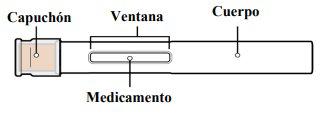
После использования
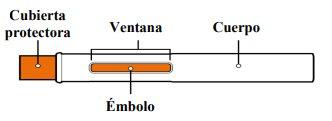
ШАГ 1: Подготовьте свою инъекцию
1.1. Подготовьте ровную и чистую поверхность, например, стол или прилавок, в хорошо освещенной зоне. | |
1.2. Вам также понадобится (не включено) (см. Фигуру А):
|
|
1.3. Достаньте из холодильника коробку, содержащую предзагруженную ручку. Нехраните предзагруженную ручку вне холодильника более 14 дней без использования. | |
1.4. Проверьте срок годности, указанный на коробке, чтобы убедиться, что он не истек (см. Фигуру Б). Неиспользуйте предзагруженную ручку, если срок годности истек. 1.5. Если вы открываете коробку впервые, проверьте, что коробка не имеет признаков повреждения. |
|
Неиспользуйте предзагруженную ручку, если коробка кажется поврежденнойили была открыта. | |
1.6. Откройте коробку и достаньте предзагруженную ручку одноразового использования. Недержите предзагруженную ручку за крышку. 1.7. Верните оставшиеся предзагруженные ручки в коробке в холодильник. 1.8. Оставьте предзагруженную ручку при комнатной температуре на подготовленной поверхности в течение 45 минут перед использованием, чтобы препарат в ручке достиг комнатной температуры (см. Фигуру В). Примечание: Если вы этого не сделаете, инъекция может быть неудобной и может занять больше времени. Ненагревайте ручку каким-либо другим способом, например, в микроволновой печи, горячей воде или прямом солнечном свете. |
|
Неснимайте прозрачную крышку с предзагруженной ручки до тех пор, пока не будете готовы к инъекции, чтобы избежать травм. Держите Тienne вне досягаемости детей. |
ШАГ 2: Проверьте предзагруженную ручку
2.1. Проверьте, что предзагруженная ручка не треснута и не повреждена (см. Фигуру Г). Неиспользуйте предзагруженную ручку, если она имеет признаки повреждения или если она упала. |
|
2.2. Проверьте этикетку на предзагруженной ручке, чтобы убедиться, что:
Неиспользуйте предзагруженную ручку, если название на этикетке не является Тienne или если срок годности истек. |
|
2.3. Осмотрите препарат через окно. Убедитесь, что он прозрачный и бесцветный до светло-желтогои не содержит чешуек или частиц (см. Фигуру Е). Примечание: Нормально, если есть пузырьки воздуха в препарате. Невводите, если жидкость мутная, окрашена или имеет хлопья или частицы, потому что это может быть не безопасно для использования. |
|
ШАГ 3: Мойте руки
3.1. Мойте руки с водой и мылом и вытирайте их хорошо чистым полотенцем (см. Фигуру Ж). |
|
ШАГ 4: Выберите место инъекции
4.1. Если вы вводите себе инъекцию, вы можете использовать:
Примечание: Выберите разное место для каждой инъекции, чтобы уменьшить покраснение, раздражение или другие кожные проблемы. Невводите в больную (чувствительную) кожу, синяки, покраснение, твердость, шелушение или кожу с поражениями, родинками, шрамами, растяжками или татуировками. Неиспользуйте предзагруженную ручку через одежду. |
|
ШАГ 5: Очистите место инъекции
5.1. Очистите кожу в месте инъекции салфеткой, смоченной в спирте (см. Фигуру И). Дайте коже высохнуть. Недуйте и не трогайте место после очистки. |
|
ШАГ 6: Введите инъекцию
6.1. Когда вы будете готовы к инъекции, держите предзагруженную ручку в одной руке с прозрачной крышкой, обращенной вверх. Другой рукой крепко потяните прозрачную крышку наружу без поворота (см. Фигуру К). Примечание: Используйте предзагруженную ручку немедленнопосле снятия крышки, чтобы избежать загрязнения. Непытайтесь снова закрыть иглу, ни в коем случае, даже после окончания инъекции. Нетрогайте крышку иглы (оранжевую часть на конце предзагруженной ручки), потому что вы можете случайно уколоться. 6.2. Утилизируйте прозрачную крышку. 6.3. Поверните предзагруженную ручку так, чтобы оранжевый чехол иглы был обращен вниз. |
|
6.4. Поместите руку на предзагруженную ручку так, чтобы вы могли видеть окно. 6.5. Поместите предзагруженную ручку против вашей кожи под углом 90 градусов (прямо) (см. Фигуру Л). Примечание: Чтобы убедиться, что вы вводите под кожу (в жировую ткань), не держите предзагруженную ручку под углом. Примечание: Ненеобходимо щипать кожу. |
|
Чтобы убедиться, что вы вводите полную дозу, прочитайте все шаги с 6.6 по 6.9, прежде чем начать: |
|
6.6. Одним движением нажмите предзагруженную ручку крепко против вашей кожи, пока не услышите первый щелчок. Оранжевый поршень будет двигаться через окно во время инъекции (это означает, что инъекция началась) (см. Фигуру М). |
|
6.7. ПОДОЖДИТЕ и держите предзагруженную ручку на месте, пока не услышите второй щелчок. Это может занять до 10 секунд. Продолжайте УДЕРЖИВАТЬ(см. Фигуру Н). |
|
6.8. Подождите и посчитайте медленно до 5 после второго щелчка. Продолжайте УДЕРЖИВАТЬпредзагруженную ручку на месте, чтобы убедиться, что вы вводите полную дозу (см. Фигуру О). Неподнимайте предзагруженную ручку, пока не будете уверены, что прошло 5 секунд и инъекция завершена. |
|
6.9. Пока вы держите предзагруженную ручку на месте, проверьте окно, чтобы убедиться, что оранжевый поршень полностью появился в окне и перестал двигаться (см. Фигуру П), Примечание: Если оранжевый поршень не опустился полностью или если вы считаете, что не получили полную инъекцию, позвоните вашему врачу. Непытайтесь повторить инъекцию с новой предзагруженной ручкой. |
|
ШАГ 7: Удалите и проверьте предзагруженную ручку
7.1. После окончания инъекции отсоедините предзагруженную ручку от кожи (см. Фигуру Р). Примечание: Защитный чехол будет скользить вниз и покрывать иглу. Неснова закрывайте предзагруженную ручку. |
|
7.2. Проверьте окно, чтобы убедиться, что оранжевый поршень опустился полностью (см. Фигуру С). Примечание: Если оранжевый поршень не опустился полностью или если вы считаете, что не получили полную инъекцию, позвоните вашему врачу. Непытайтесь повторить инъекцию с новой предзагруженной ручкой. |
|
7.3. Если вы видите кровь в месте инъекции, прижмите ватный шарик или марлю к коже, пока она не перестанет кровоточить (см. Фигуру Т). Нетрите место инъекции. |
|
ШАГ 8: Утилизируйте свою предзагруженную ручку
8.1. Поместите использованную предзагруженную ручку в контейнер для острых предметов сразу после использования (см. Фигуру У). Неснова помещайте прозрачную крышку на предзагруженную ручку. Невыбрасывайте (утилизируйте) предзагруженную ручку в домашний мусор. Неповторно используйте предзагруженную ручку. Если у вас нет контейнера для острых предметов, вы можете использовать домашний контейнер, который:
Когда контейнер для утилизации острых предметов почти полон, вам необходимо следовать местным рекомендациям для правильной утилизации контейнера. Невыбрасывайте (утилизируйте) использованный контейнер для острых предметов в домашний мусор, если только местные правила это не разрешают. Неперерабатывайте использованный контейнер для острых предметов. Всегдадержите контейнер для острых предметов вне досягаемости детей. |
|
ШАГ 9: Запишите свою инъекцию
9.1. Запишите дату и место инъекции (см. Фигуру Ф). Примечание: Это поможет вам вспомнить, когда и где вам необходимо сделать следующую инъекцию. |
|
- Страна регистрации
- Активное вещество
- Требуется рецептДа
- Производитель
- Информация носит справочный характер и не является медицинской рекомендацией. Перед приемом любых препаратов проконсультируйтесь с врачом. Oladoctor не несет ответственности за медицинские решения, принятые на основе этого контента.
- Аналоги ТИЕННЕ 162 мг РАСТВОР ДЛЯ ИНЪЕКЦИЙ В ПРЕДНАПОЛНЕННОМ ШПРИЦЕ-РУЧКЕФорма выпуска: ИНЪЕКЦИОННЫЙ РАСТВОР, 162 мгАктивное вещество: ТоцилизумабПроизводитель: Celltrion Healthcare Hungary Kft.Требуется рецептФорма выпуска: ИНЪЕКЦИОННЫЙ РАСТВОР, 162 мгАктивное вещество: ТоцилизумабПроизводитель: Celltrion Healthcare Hungary Kft.Требуется рецептФорма выпуска: ИНЪЕКЦИОННЫЙ РАСТВОР ДЛЯ ИНФУЗИЙ, 20 мг/млАктивное вещество: ТоцилизумабПроизводитель: Celltrion Healthcare Hungary Kft.Требуется рецепт
Аналоги ТИЕННЕ 162 мг РАСТВОР ДЛЯ ИНЪЕКЦИЙ В ПРЕДНАПОЛНЕННОМ ШПРИЦЕ-РУЧКЕ в других странах
Лучшие аналоги с тем же действующим веществом и терапевтическим эффектом.
Аналог ТИЕННЕ 162 мг РАСТВОР ДЛЯ ИНЪЕКЦИЙ В ПРЕДНАПОЛНЕННОМ ШПРИЦЕ-РУЧКЕ в Україна
Врачи онлайн по ТИЕННЕ 162 мг РАСТВОР ДЛЯ ИНЪЕКЦИЙ В ПРЕДНАПОЛНЕННОМ ШПРИЦЕ-РУЧКЕ
Консультация по дозировке, побочным эффектам, взаимодействиям, противопоказаниям и продлению рецепта на ТИЕННЕ 162 мг РАСТВОР ДЛЯ ИНЪЕКЦИЙ В ПРЕДНАПОЛНЕННОМ ШПРИЦЕ-РУЧКЕ – по решению врача и с учетом местных правил.



